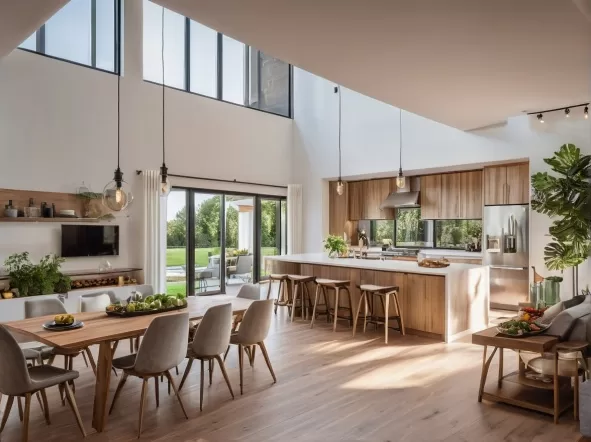2025 Housing Market Trends and Predictions

The housing market is a dynamic entity, constantly influenced by economic shifts, policy changes, and societal trends. As we navigate through 2025, understanding these factors becomes crucial for prospective buyers, sellers, and investors. This comprehensive analysis delves into the current state of the housing market, emerging trends, and future predictions, specifically focusing on 2025 Housing Market Trends and Predictions, providing you with the insights needed to make informed decisions.
Introduction
The year 2025 has ushered in a myriad of changes within the housing market. From fluctuating mortgage rates to evolving buyer preferences, the landscape is both challenging and opportunistic. Recent policy shifts, such as the introduction of broad tariffs on imports, have added layers of complexity, impacting construction costs and market dynamics. In this blog, we will explore the 2025 Housing Market Trends and Predictions in detail, offering a roadmap to navigate the housing market effectively.
1. Current State of the Housing Market
a. Mortgage Rates and Affordability
As of April 2025, the average 30-year fixed mortgage rate stands at approximately 6.64% . This marks a slight decrease from earlier in the year, offering a glimmer of hope for potential homebuyers. However, affordability remains a pressing concern, with home prices continuing to rise, albeit at a moderated pace.
b. Home Prices and Inventory Levels
The national average home value is currently $357,138, reflecting a 2.6% year-over-year increase. While this growth indicates a cooling from the rapid escalations of previous years, inventory levels remain tight, contributing to sustained price pressures.
2. Impact of Economic Policies
a. Tariffs and Construction Costs
The recent implementation of a 10% tariff on all imports has had a multifaceted impact on the housing market. On one hand, the increased cost of imported construction materials has led to higher building expenses, potentially driving up new home prices. Conversely, economic uncertainties stemming from these tariffs have led to fluctuations in mortgage rates, sometimes benefiting buyers in the short term.
b. Regional Market Shifts
Certain regions, particularly in the southern United States, have transitioned into buyer-friendly markets. Cities like Miami and Jacksonville have experienced increased housing inventory and extended time on the market, leading to more negotiating power for buyers.
3. Emerging Trends in Home Design
a. Floor Plan Innovations
Modern home designs are increasingly emphasizing open and airy floor plans that cater to flexible living arrangements. For instance, the New American House Plan features a 2,025 sq ft layout that seamlessly integrates living, dining, and kitchen areas, promoting a sense of spaciousness and flow.
b. Sustainable and Smart Homes
The demand for sustainable and energy-efficient homes continues to rise. Features such as solar panels, smart home technology, and eco-friendly building materials are becoming standard expectations among buyers, reflecting a broader societal shift towards environmental consciousness.
4. Predictions for the Remainder of 2025
a. Home Price Trajectory
Experts predict that home prices will see modest growth throughout 2025. Nationwide forecasts a growth range of 2% to 4%, contingent upon factors such as interest rate adjustments and economic stability.
b. Mortgage Rate Fluctuations
While current mortgage rates offer some relief, the market remains sensitive to economic indicators and policy changes. Potential buyers should stay informed and be prepared to act swiftly in response to rate adjustments.
c. Regional Variations
Certain metropolitan areas may experience divergent trends. For example, regions with burgeoning tech industries or infrastructural developments might see accelerated price growth, while others facing economic challenges could witness stagnation or declines.
5. Strategies for Buyers and Sellers
a. For Buyers
- Financial Preparedness: Ensure your finances are in order, with a solid credit score and a substantial down payment to secure favorable mortgage terms.
- Market Research: Stay updated on local market conditions, as trends can vary significantly by region.
- Flexibility: Be open to exploring different neighborhoods or property types to find better deals.
b. For Sellers
- Competitive Pricing: Set a realistic price based on current market analyses to attract serious buyers.
- Home Staging: Invest in minor renovations and staging to enhance the property’s appeal.
- Timing: Consider market seasonality and local demand to time your listing effectively.
Conclusion
The 2025 housing market presents a complex tapestry of challenges and opportunities. Economic policies, regional dynamics, and evolving buyer preferences are shaping a landscape that demands vigilance and adaptability. By staying informed and strategic, both buyers and sellers can navigate this market to their advantage. As we move forward, continuous monitoring of trends and proactive planning will be key to making sound real estate decisions.
